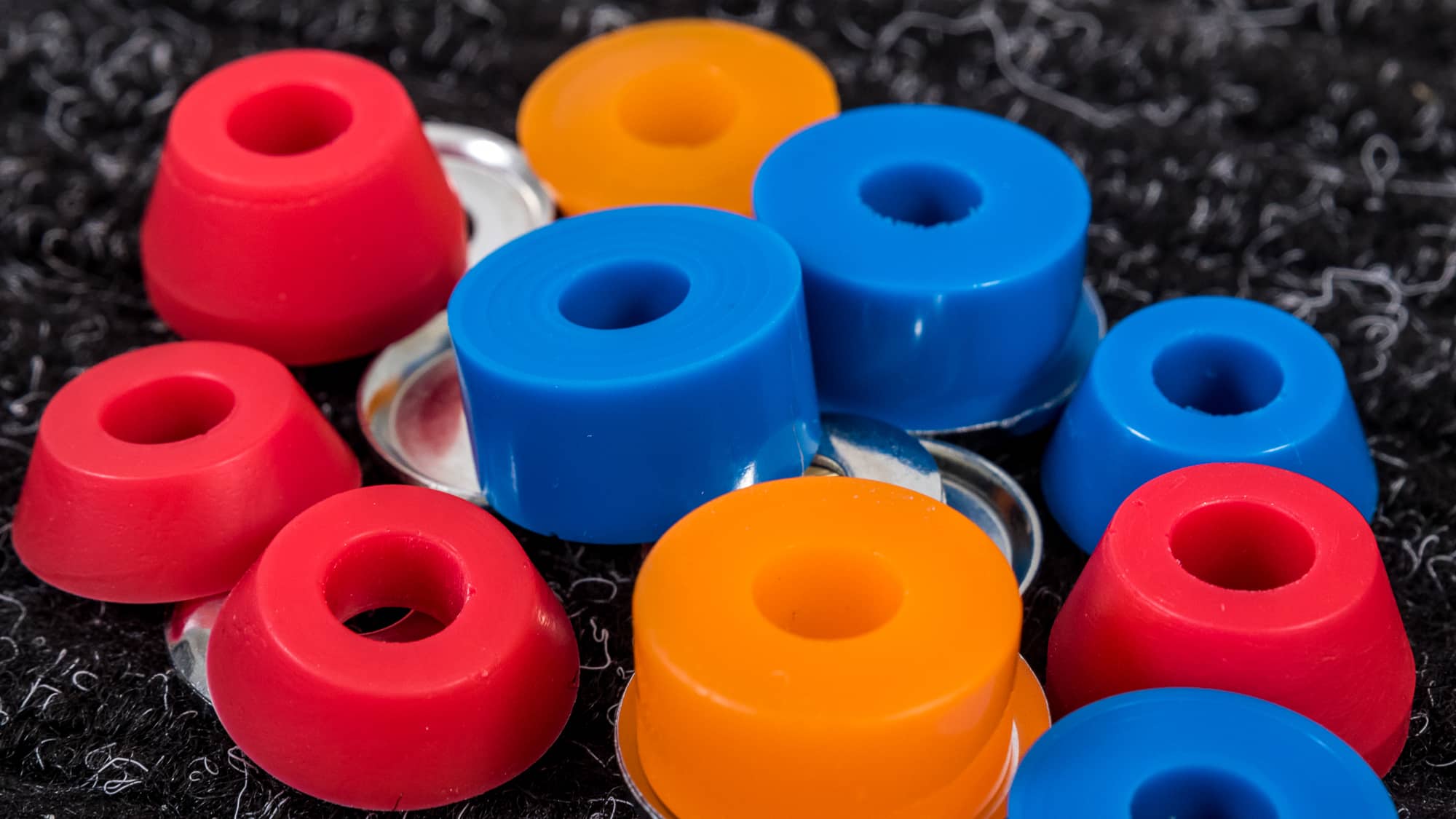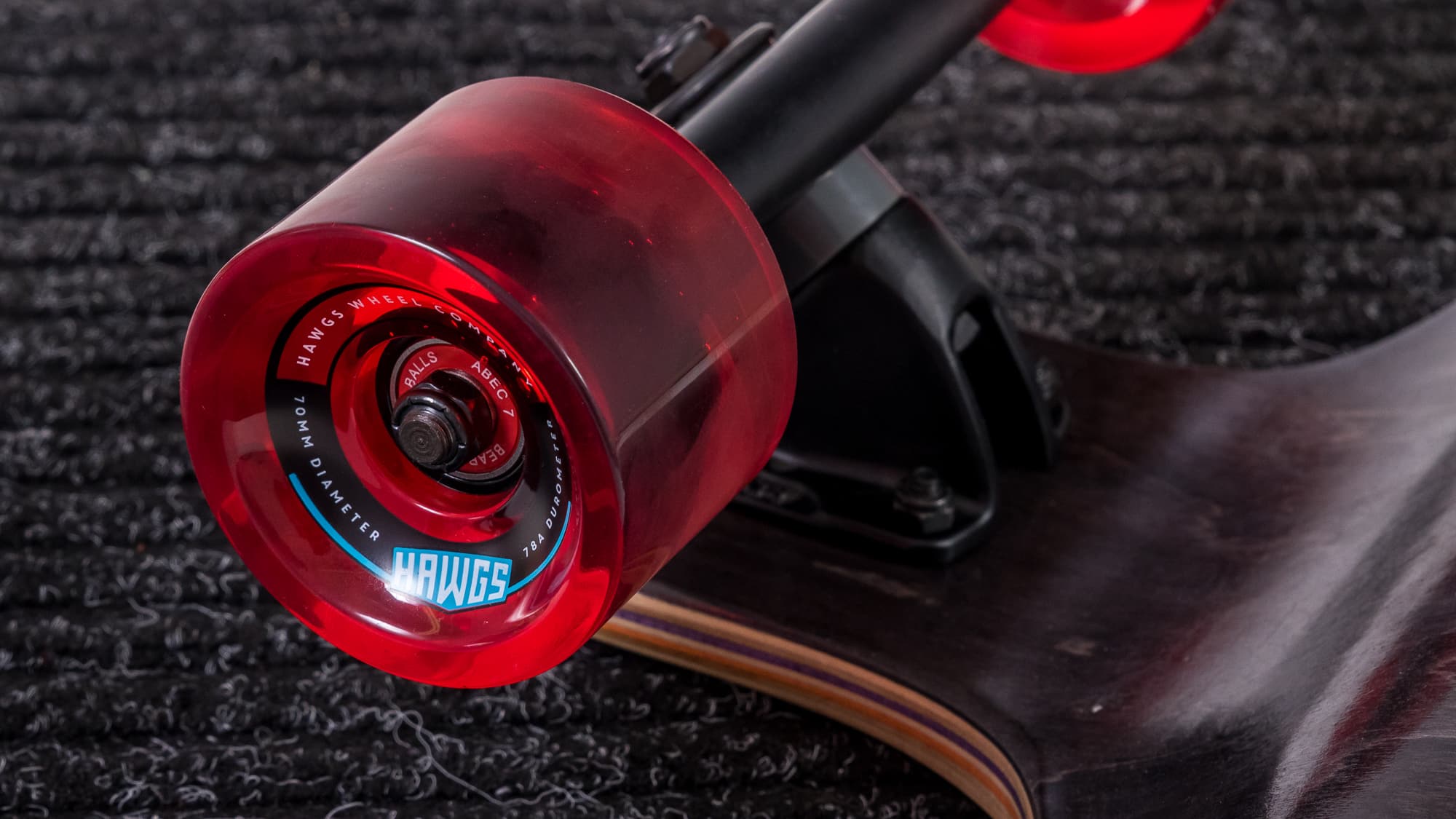Choosing Longboard Trucks
When choosing trucks for your longboard, the two biggest decisions you need to make are: How wide should my trucks be? And do I want Standard Kingpin (SKP) trucks or Reverse Kingpin (RKP) trucks? This guide will help you make those two most important decisions and provide insights on the all the parts and styles of longboard trucks.
Here’s what we’ll cover:
- Types of Longboard Trucks
- Longboard Truck Size
- Longboard Truck Bushing Seats
- Longboard Truck Baseplate Angles
- Precision Trucks
Types of Longboard Trucks
Choosing between standard kingpin trucks (SKP) and reverse kingpin trucks (RKP) should be decided by the type of riding you wish to do on your setup.
Standard Kingpin Trucks
If you want a versatile truck for getting around town on your cruiser, these are the trucks for you. Standard Kingpin trucks are most commonly used for street and park skateboarding, but they are also ideal for smaller longboard cruisers because they have a low ride height and are offerred in smaller sizes. For more info on SKP trucks, check out our Choosing Skateboard Trucks page.
Reverse Kingpin Trucks
Reverse kingpin trucks are more popular for for longboarding because they are lively and responsive at slow speeds while offering more stability and control at high speeds. However, they sit higher than SKP trucks and create a slightly smaller wheelbase, so they aren't ideal for smaller cruisers with kicktails. If you have a deck with a wheelbase of 20" or more, RKP trucks will give you a more stable and responsive setup for carving, transportation, freestyle, freeride, and downhill.






Longboard Truck Size
The width of your longboard trucks should be as close to the width of your longboard deck as possible. It's ideal if they match exactly but it’s ok if they are a little off. We recommend keeping the difference to less than 1/4".
Some companies list truck width differently, which can make it hard to pick the right size. Here at Tactics, we provide axle width measurements in inches for every brand, so you can easily match your trucks to the deck size you’re skating.
In general, a wider truck will be more stable but less responsive while a narrower truck will be less stable but more responsive. For these reasons, 10'' or 180mm trucks are more common for downhill and freeride, while 9'' or 150mm trucks are more popular for carving, transportation, and freestyle.
Longboard Truck Bushing Seats
The bushing seat is the pocket in the center of the hanger which cradles the bushings and helps regulate the trucks ability to turn. Tight bushing seats fit snugly around the bushings to moderate the turn of the trucks, providing more stability for high speeds, but sacrificing responsiveness at slower speeds. Open or unrestrictive bushing seats allow for sharp turns and carves with minimal effort, making them great for transportation, carving and freestyle riding.
Most longboard trucks fall somewhere in the middle to provide a more versatile truck that can be more easily customized for any type of riding. No matter what the bushing seat, you can customize the feel of your trucks by swapping out the shape, and durometer of your bushings. If you need some help finding a bushing setup that will work well for your riding style, check out our Choosing Longboard Bushings page.
Longboard Truck Baseplate Angles
The baseplate angle determines the angle that your hanger sits at when riding and can dramatically affects the way your trucks turn.
High Degree Longboard Trucks
Most reverse kingpin trucks come stock with 50 degree baseplates. This high angle makes trucks tall and divey. Putting a small amount of pressure on the edge of your deck will make your setup turn a large amount. 50 degree baseplates are ideal for carving, transportation, freestyle, slower speed freeride, and all beginners speed freeride because they give you a very snappy, responsive feel even at slow speeds.






Low Degree Longboard Trucks
Lower degree baseplates are generally preferred for fast freeride and downhill because they offer more stability. A setup with 42 degree trucks will turn far less than a setup with 50 degree trucks when the same amount of pressure is applied to the edge of the deck. This makes them more stable at high speeds because speed exaggerates even the smallest of movements. A lower degree baseplate will make your setup less twitchy and less affected by imperfections in the road.
Split Degree Truck Setups
Many downhill riders prefer split angle setups, where a lower degree baseplate is used on the back truck. For example, a 42 degree back truck with a 50 degree front truck. This makes the setup lively and responsive in the front while keeping you stable in the back to avoid back truck steering which is the cause speed wobbles.
PRECISION TRUCKS
Precision trucks are designed to give advanced level downhill and freeride longboarders premier performance from their trucks. While most trucks are cast or shaped by being poured into molds, precision trucks are cut out of a single piece of metal by a CNC machine. This makes them far stronger and allows the truck's design to be perfected down to the tiniest details. This results in a smoother, more predictable turn and a generally more stable ride.
Precision trucks offer top of the line performance for a typically high price. However, they are often worth the investment for dedicated riders because they are very durable and far outlast their cast counterparts.
Keep Learning
Still Have Questions?
We’re here to help. You can call, email, chat or IM during business hours seven days a week. Our customer service staff skates…a lot. They know their stuff and are happy to help you with all things skate.









































